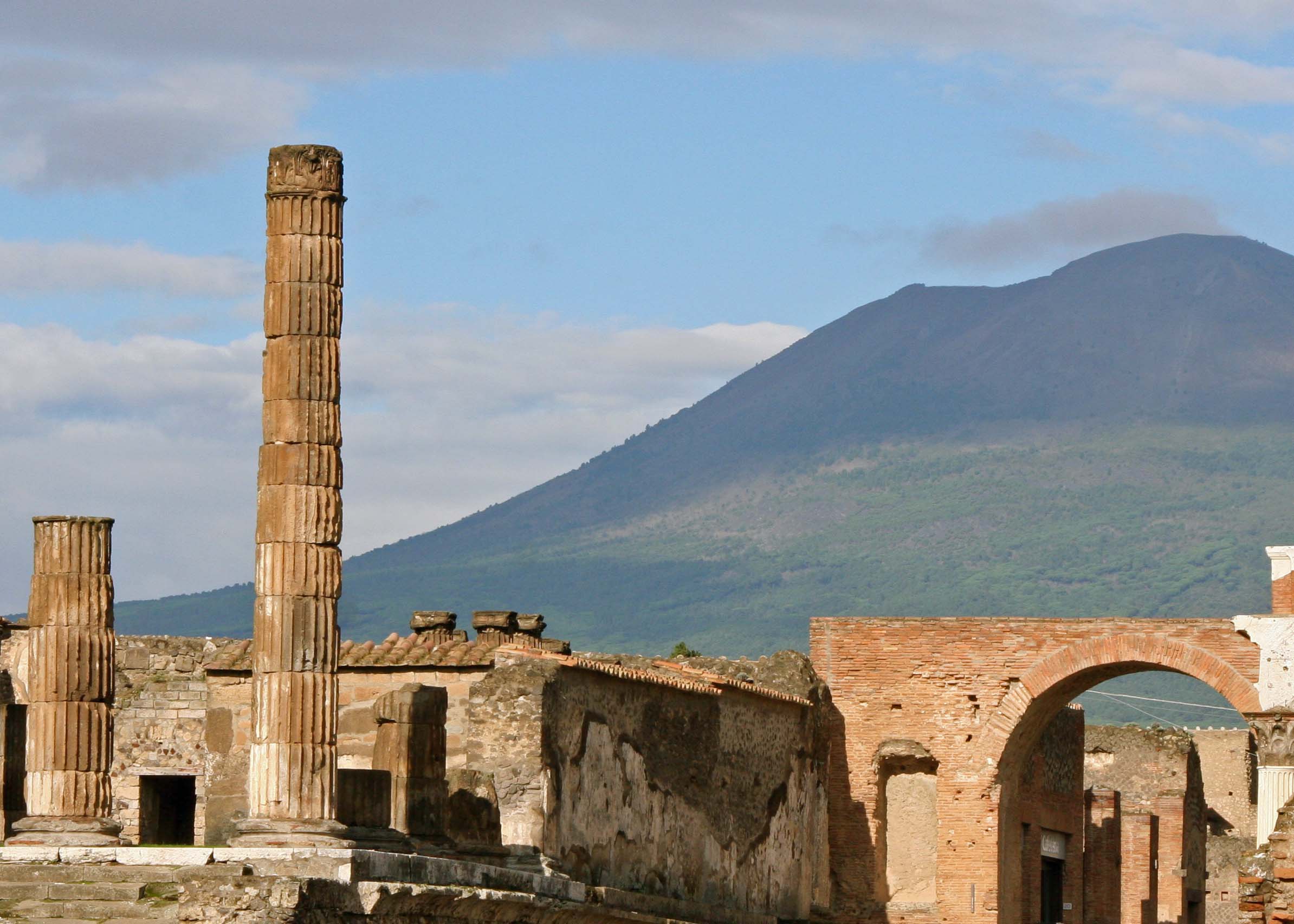A while back I posted a photo essay on Pompeii that many of you would have seen. This post will include some of those photos but the focus will be on the Roman gods (adopted and adapted from Greek gods) that were a daily part of Pompeian life before Mt. Vesuvius blew its top. Once again, I am traveling back in time and pulling up a post from my archives for my armchair travel series in the time of Covid-19.

It is impossible to visit the ancient cities of the Mediterranean without thinking about the importance of the all-too-human early gods.
Back before they were relegated to the status of myths, they were as alive and real to the people as say Christ might be to today’s faithful Christians. A primary difference was their misbehavior. They became involved in feuds, had affairs, became jealous, drank too much, etc. Other than the fact they were immortal and extremely powerful, they might be your neighbor.
If they liked you, they could be your best buddy. Make you healthy, wealthy and wise. But if they disliked you, watch out! They were like the little girl who had a little curl right in the middle of her forehead. “When she was good, she was very, very good, but when she was bad, she was horrid.” (From a poem by Henry Wadsworth Longfellow)
So it isn’t surprising that the ancient folks of the Mediterranean spent a great deal of energy and money trying to stay on the good side of their gods. Some of the world’s greatest art was created in their honor and whole herds of castrated animals were sacrificed and cooked to keep them smiling. Interestingly, the smoke from the cooking meat seemed to satisfy the gods. Mere mortals consumed the flesh. As the old saying goes, “Man is nothing, if not practical.”
The Romans, who lacked Greek creativity, obtained their gods wholesale from Greece, only changing their names to sound more Latin. Zeus with his fiery lightning bolt became Jupiter, his wife/sister Hera, became Juno, and his daughter Athena, who sprang fully armed from his head and gave him a headache, became Minerva. And of course there was a whole pantheon of other gods.
Each of these gods had a role to play. If you wanted to kick someone’s tail, Zeus was your ‘man.’ Juno could help you through a difficult childbirth. If you needed more wisdom, and who among us doesn’t, Minerva was there for you. There was no one stop shopping like today’s church goers enjoy.
The gods did gain more power as they aged, however. They took on the roles, and sometimes personalities, of the earlier gods they replaced. Juno, for example, was responsible for both “loosening a bride’s girdle” and protecting the money of the Roman Empire. In her latter role she was the patron Goddess of the Royal Mint.



Jupiter, Juno and Minerva were worshipped as a triad in both Pompeii and Rome. Possibly it saved time and money. There was also a temple to Mercury in Pompeii. His earlier persona had been that of the super fast Greek God Hermes who carried messages for the gods and had wings on his feet. He was also the god of getting rich, luck, trickery and thievery. Hmmm. Sometimes a fast get-a-way is critical.


“Hey Romans, you’re guilty of cultural appropriation!”
“Suppose so, but hey, we took the temples and everything in them too.”
And so on and so on… Right down to Christianity. 🙂
I think I’d want to be on the good side of the gods as well! And I like Peggy’s perspective!!!!
Never hurts. 🙂 And Peggy says thank you.
Peggy’s perspective certainly brought a morning chuckle. A god for your every need. Perhaps not so much different from the saints? I grew up praying to St Anthony if I had lost something, St Christopher dangled around my neck to keep me safe and the list goes on.
Right you are, Sue! I am pretty sure that the saints are merely a continuation of the early gods, making religion more personal. I remember having a Saint Christopher medal as a kid. Even before I realized I would spend so much of my life traveling! 🙂
The gods knew how to party! Well captured Peggy 😀
That they did. 🙂 Peggy says thanks! –Curt
Nice run through the Ancients Curt!
Always amusing and fascinating, Andrew.
A stroll down memory lane is a good response to lockdown, Curt. Which of these memories stands out strongest for you, I wonder?
Hard to compare, Dave, since each one is so different. For example, how in the heck would one compare the Parthenon with Pompeii. Or even more dramatic, Santorini with Pompeii. I’m just glad that I have so many varied memories and experiences. Much better than material objects! 🙂 –Curt
Oh yes, it’s past experience that keeps us alive to new events – objects, such as souvenirs, are just clutter by comparison!
oh yaa but is a duet any no.. soo bigggen funsits